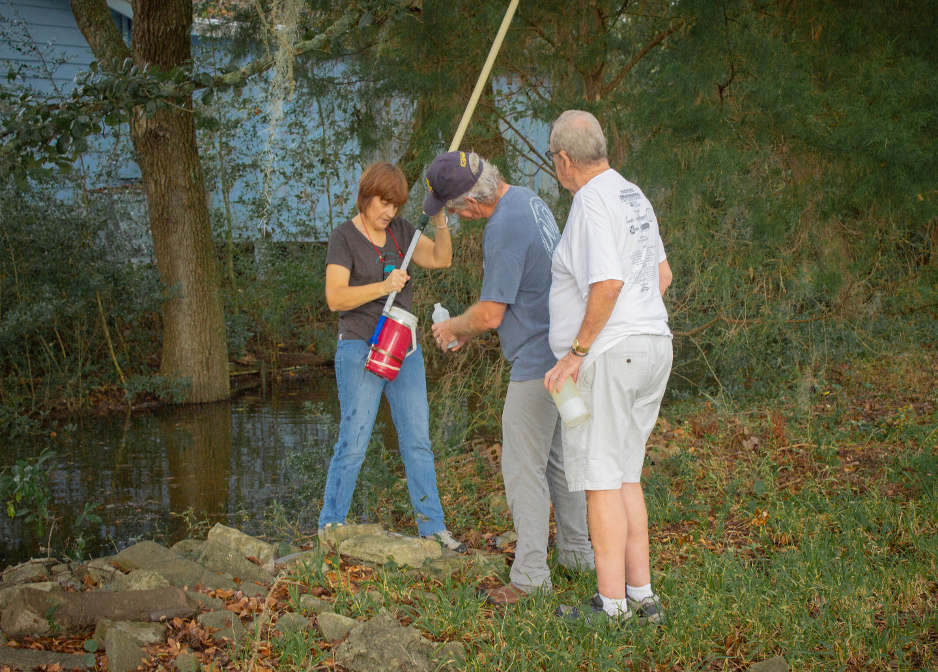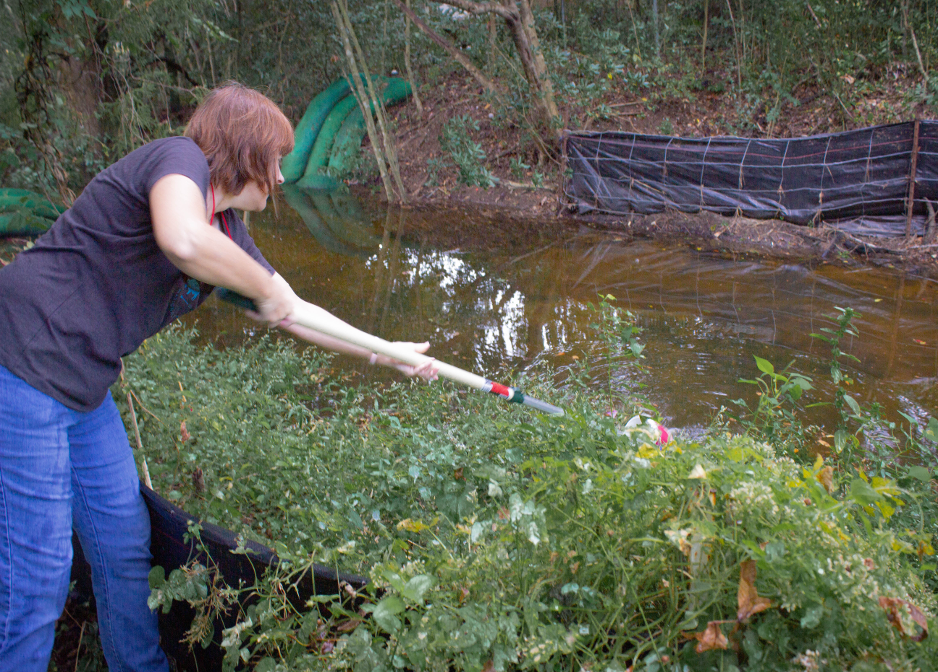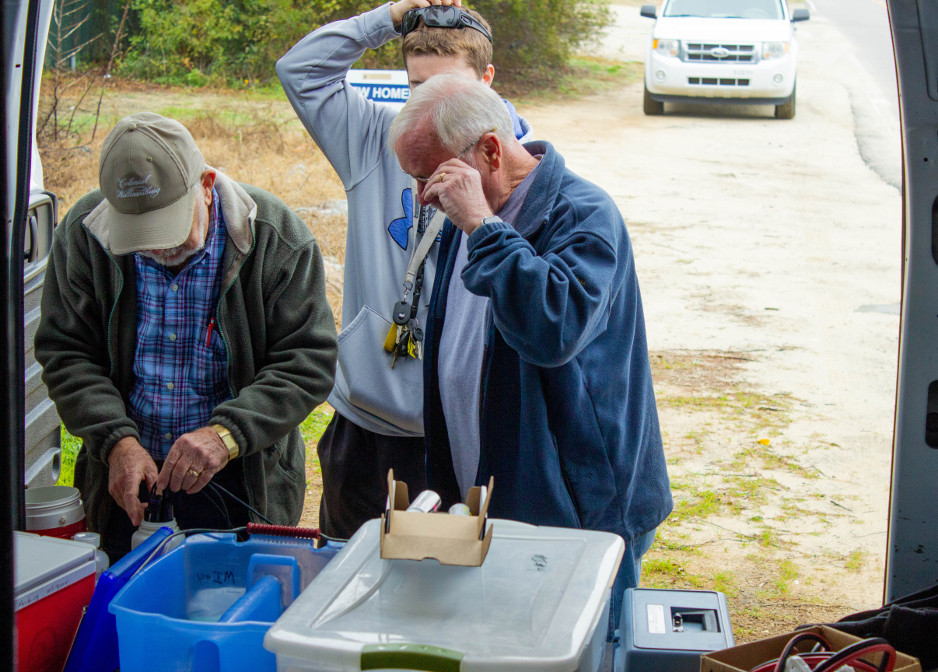The Guardians
of Murrell’s Inlet’s Oyster Beds
by Andrew Crance
Andrew Crance is a master's student in Coastal Marine and Wetland Studies at Coastal Carolina University, and interns with CCU’s Environmental Quality Lab where he performs field and analytical water quality work. As part of his internship, Andrew also develops scientific outreach products, like this article, for the Coastal Waccamaw Stormwater Education Consortium.
The air was chilled crisp the morning we drove down to Murrell’s Inlet. I had joined the Environmental Quality Lab at Coastal Carolina University (CCU) a few weeks prior and knew very little about working with citizen scientists; but now we were about to arrive at the meeting grounds for the Murrells Inlet’s volunteer water quality monitoring group. This group meets twice a month for water quality sampling in the Inlet and its tributary waters.
In the days leading up to this event, I studied the history of the program. For the people of Murrells Inlet, oyster fishing is a part of their heritage and a productive economic pursuit. However, routine water quality monitoring performed by South Carolina’s Department of Health and Environmental Control (SCDHEC) since the 1970’s has detected elevated levels of fecal bacteria, leading to the permanent closure of several public oyster beds. This created an opportunity for local people to engage in both the political and scientific processes to find solutions to re-open the beds. In 2008, Murrell’s Inlet 2020, in conjunction with CCU’s Waccamaw Watershed Academy and the Coastal Waccamaw Stormwater Education Consortium (CWSEC), established a volunteer water quality monitoring program to investigate the source of the fecal bacteria and develop a strategy for cleaning their watershed and restoring valuable oyster beds. Funding is provided by the stormwater programs in Horry and Georgetown counties.
Upon arrival, I was introduced to about a dozen volunteers. I quickly noticed that most of the volunteers were retirees. I was filled with respect to see my elders continue paving a way for future generations. Many had retired from science-related fields such as energy, research, and engineering, while many had no previous experience in science. I was greeted with warm handshakes pulling me in and welcoming me to their group. The early morning chatter was mainly about the task at hand with some discussions of successes and failures of ongoing missions.
To insure quality data are collected, the volunteers had attended trainings with CCU’s Waccamaw Watershed Academy on sample collection and the use of field meters. They gained competency in measurements of several field parameters using the meters, including dissolved oxygen, dissolved solids, acidity, and temperature. They also collect grab samples for measurement of nutrients and fecal bacteria. These measurements are performed at the homes of volunteers who have kindly agreed to house the equipment. The data is published for governmental and public use and can be found at http://bccmws.coastal.edu/volunteermonitoring/index.html.
In 2005, the US EPA approved a pollution reduction plan for Murrells Inlet called a TMDL, or “Total Maximum Daily Load”. This plan called for a fecal bacteria pollution reduction of at least 80% to enable water quality improvement that would lead to reopening of the closed shellfish beds. This plan, however, did not include information on the source of the bacteria. In 2008, the volunteer water quality monitoring program set as one of its main goals identification of the geographic locations of the sources. This source information led to the development of a watershed-based plan that contains specific techniques for reducing these sources. The plan was approved by SC DHEC in 2014 and a steering committee was established to implement action items in the plan. The committee then obtained grant funding to install a variety of pollution control devices. The volunteers have been collecting data to see how effective these devices have been in reducing fecal bacteria discharges to Murrells Inlet waters.
Though the remediation in Murrells Inlet’s estuary is far from complete, the collaboration between government, local organizations, and citizens has solidified into a robust framework to find solutions. Volunteerism has instilled a sense of ownership and responsibility for the wellbeing of the environment. These volunteers have gone from being passive bystanders to becoming agents of change. My Environmental Policy professor regularly told us that we need to “understand the difference in making noise and making change.” The guardians of Murrells Inlet’s oyster beds understand this and rather than leaving it to others to find solutions, they’ve taken on the task for themselves. Getting involved, learning the science, and taking responsibility for our communities is what I believe to be the missing key to solving the environmental challenges facing our world. Combine this with effective environmental policy, sound science and cutting-edge technologies and we might be able to tackle our biggest environmental issues. For more information on the Waccamaw Watershed Academy and how to become a volunteer, visit https://www.coastal.edu/wwa/.





